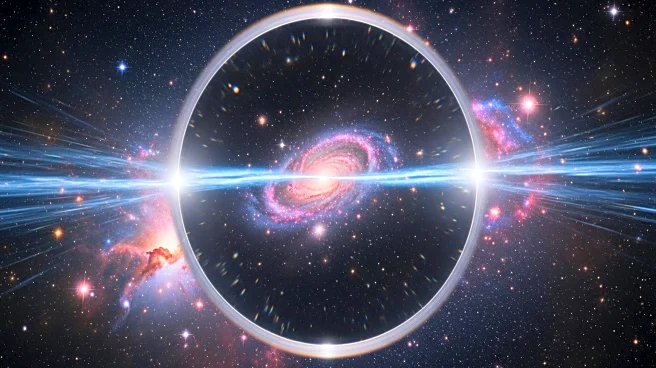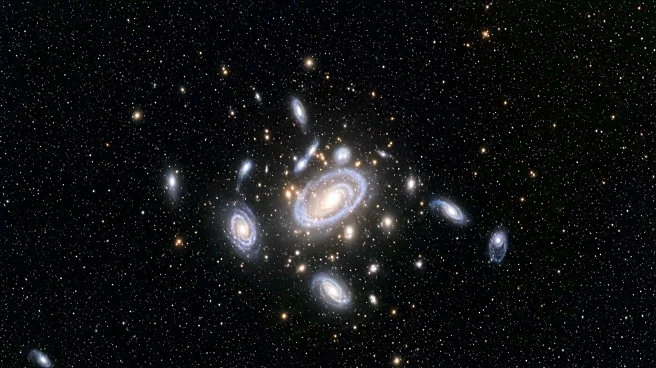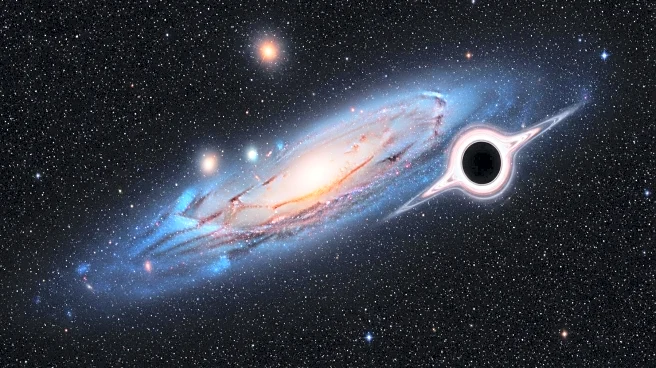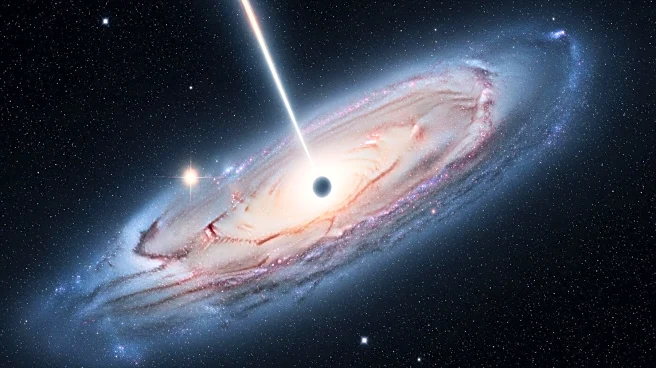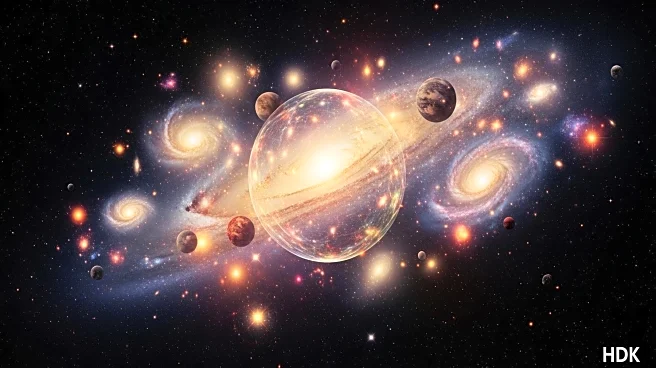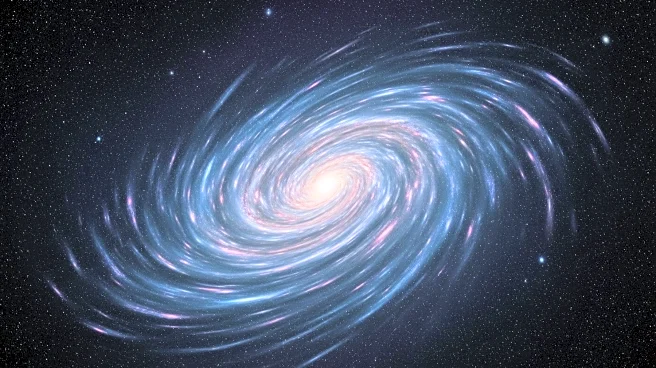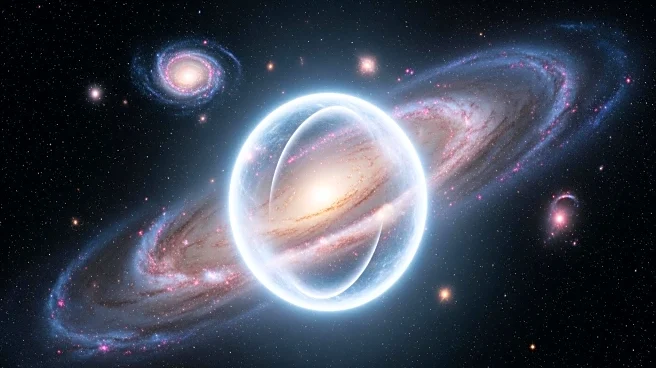What's Happening?
The James Webb Space Telescope (JWST) has captured images of eight galaxies exhibiting the phenomenon known as Einstein rings, a result of gravitational lensing. This effect occurs when massive galaxies bend the light from more distant galaxies into arcs or rings, as predicted by Albert Einstein over a century ago. The images, part of the COSMOS-Web project, reveal details previously unseen by the Hubble Space Telescope, showcasing galaxies distorted into perfect circles. These observations allow astronomers to study the mass of galaxies, including dark matter, and provide insights into the early universe.
Why It's Important?
The discovery of these Einstein rings is significant for the field of astronomy as it enhances the understanding of gravitational lensing, a tool that allows scientists to observe distant galaxies that would otherwise be invisible. This phenomenon not only helps in measuring the mass of galaxies but also in studying the distribution of dark matter, which is crucial for understanding the structure and evolution of the universe. The sharper infrared vision of the JWST compared to previous telescopes opens new avenues for exploring the cosmos, potentially leading to breakthroughs in cosmology and astrophysics.



